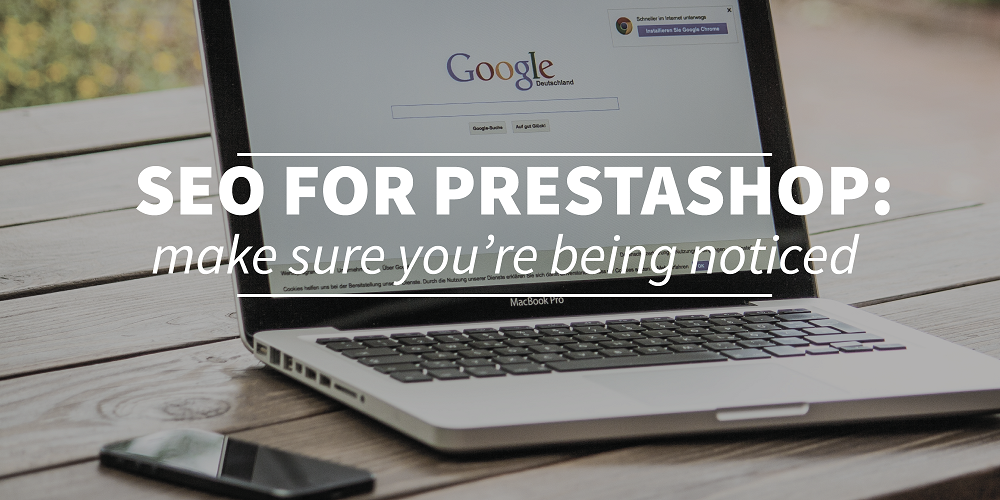![How to Do SEO in 2015? [Infographic]](https://www.textmetrics.com/wp-content/uploads/2015/06/seo.png)
by Kyrill Poelmans | Jun 12, 2015
Search engine optimization is changing all the time and every now and then it’s smart to update your knowledge. Last week we shared the SEO cheat sheet from MOZ with you and today we found another very useful article with a new SEO guide by Business 2 Community. This easy and quick guide tells you exactly how to do SEO in 2015!
The basic of SEO is writing good content, but with your targeted SEO strategy, you probably want to rank on a specific keyword that leads the right customers to your website. There are certain steps you can take to increase your visibility in the search engines. It all starts with finding out what keywords and phrases you should focus on. Don’t just look at Google’s keyword data but look at what your target audience and buyers want to read. Search for subjects like ‘How to..?’-questions and make sure that your content truely answers their questions.
Make sure that you write the right way to get the best results. If you want to make sure that you’re up-to-date all the time, you should start your free trial of Textmetrics right now.
Learn from this infographic and optimize your SEO strategy for 2015:


by Kyrill Poelmans | May 30, 2015
An overview of multiple techniques to map your target audience
A few weeks ago, we wrote an article about “Writing To Reach You Target Audience“. In this article, we wrote about 5 tips that you should follow to increase the traffic on your webpage. This new article is about two tips that we discussed in this article, ‘know your audience’ and ‘think like your audience’, the basics of knowing your target audience. Of course it’s easy to say, know your audience and think like them, but how do you map your target audience properly? That’s what we’re going to do today, based on a two of our own favorite techniques.
Technique 1: The Empathy Map
The first and one of our favorite techniques is “The Empathy Map”. This technique takes the ‘know your audience and think like your audience’ to a whole new level. You’ll be able to get more insights in the ways your audience thinks, acts and who influences them. To use the Empathy Map technique, you’ll need the map of course:

The Empathy Map shows you how to map your target audiences behavior and how to influence their way of thinking. This map treats 6 different aspects of your target audience. What they hear, think & feel, see, say & do but also their pain and gain. Each of these areas helps you to look from a different perspective to make you truly understand your target audience. For example, if you read a question like ‘What influences them?’ in the ‘hear’-section. you have to think from the hear perspective. Like rappers singing or DJ’s talking on the radio. For every target audience, your answer will be different and that’s exactly what makes this technique so handy. This is the best way to get insights that you wouldn’t think of in the first place. You can always think of more questions that fit the things that you want to know and answer them in the different sections!
Technique 2: Persona’s to humanize your target audience
The other technique that we truly recommend is making a persona out of your target audience. If you want to know how to think like your target audience, you can use this technique. All of the details that you know about your target audience, you can humanize into one of these persona’s. You’ll create a lifestyle, gender, age etc. If you’ve created a complete personage, you’ll be able to test all of your ideas and content to this person. You can choose to search for some real people that fit your personage and ask for their opinion or you can fit your ideas to what you think that your target audience likes!
But there are a few things that we have to warn you about. It’s possible that your personage doesn’t fully cover your whole target audience. In this case it’s very important to segment your target audience properly. Every segment gets it’s own persona, to make sure that you can test your content to all of them. The other important thing is that you won’t stereotype your target audience too much. Of course, you’ve got to have some stereotypes but make sure that you won’t think that every person that twitters, likes to gossip or every wikipedia reader is a nerd. If you pin yourself too much to these stereotypes, there will be a change that you ban a big part of your audience and that’s something you want to prevent. One thing to keep in mind is that educational level is an important aspect of a persona, especially when creating content – to make sure that your content fits that level and has the right readability level, it should not be too complex or too easy to read. Having your content at the right quality level, will increase conversion!

We can truly recommend to use these techniques and if you want to get the most complete image of your target audience, you can also use them both at the same time. These two techniques and also the technical optimization with Textmetrics are easy to combine, great isn’t it?
Create your free Textmetrics account below and start optimizing your web content!

by Kyrill Poelmans | May 9, 2015
One of the most important things in SEO copywriting are your keywords! They are the Band-Aid’s that keep your website and content together.
Once you’ve found the perfect keywords for your website/page, writing SEO friendly content isn’t that hard anymore, especially when you use our own real time optimization tool.
But this first point, choosing the best keywords, can be harder than you think. There are quite a lot of things you have to think about when you’re choosing your keywords.
It’s not only about getting visitors to your site, it’s about getting the right visitors to your site!
A lot of companies decide to call in professional SEO experts to do their keyword research, but with the tips we’re going to give you today, you will be able to make a good start yourself!
#1. Look for valuable personal keywords for higher results
The first thing you have to think about when you want to do keyword research is what your company is about. You shouldn’t think on a article base, think bigger!
You want to get high conversion rates on the keywords that are valuable to your business, not just for one article.
Our Textmetrics SEO copywriting tool will search for valuable keywords by using your content subject in the keyword research.
But sometimes, this isn’t enough. If you want your whole website to rank higher on your own valuable keywords, you should look for keywords that are relevant or you whole website/company and not just that one article.
For example, your company sells a tool like Textmetrics. You write articles on the blog about all kinds of subjects in the online marketing world.
For your readers it’s nice to read, but subjects (and keywords) like webcare have totally nothing to do with the tool that you want to sell.
That’s why you should do keyword research for your whole website/company. For example, something like ‘SEO content’.
Then you’ll be able to focus your SEO copywriting on this keyword, while you write the article about webcare!
But keep in mind, good content comes first, don’t try too hard to fit your keywords in sentences that don’t have anything to do with them at all.
You’ll only get higher conversion rates if the searchers get what they want to get by searching on these keywords!
#2. Don’t get influenced too much by the highest search volume rates
Of course, our natural instinct is, keywords that have a high search volume are the keywords that we want to focus on.
But in this case, this is exactly what you shouldn’t do. Only 30 percent of the keywords have millions or thousands of searches a day,
while the other 70 percent gets like tens or hundreds searches a day. But this doesn’t mean that these keywords aren’t just as valuable.
The keywords with the highest search volume rates probably also have the highest competition rates.
If you can reach your clients by focusing on the long tail keywords, the 70 percent, than that’s fine! Even better!
It’s not all about the highest search volume rates, it’s about the keywords that you think you can ‘own’.
For example, you’ve got a little restaurant in a small town called Demsburg. You could focus your SEO copywriting on the keyword ‘restaurant’,
which gets millions of searches a day. But all of the people that search for a restaurant, won’t come to Demsburg, to your restaurant.
You could also focus your SEO copywriting on the keyword ‘dining Demsburg‘. If you manage to get high in the search engine results
by using this keyword, you’ll probably reach a lot more relevant people than with the keyword ‘restaurant’.
Your conversion rates will be much higher, and that’s exactly why this keyword can be very valuable for your company!
#3. Choose multiple synonyms for better results
If you focus on one keyword, you’ll probably get good results. But if you want even better results, start using synonyms of your chosen keywords in your SEO copywriting!
For example, we’re still talking about the restaurant in Demsburg. They serve pancakes for breakfast, lunch and dinner.
They could use the keyword ‘dining Demsburg’, but also synonyms like ‘Demsburg restaurant’, ‘Demsburg food’, ‘Demsburg pancakes’, ‘Demsburg lunch’, ‘Demsburg diner’, ‘Demsburg afternoon food’ etc.
If they use some of these keywords too, Google will rate their website higher, because the content is very relevant to the subject.
The whole site is about food, diner and Demsburg in all kind of words, so this must be a very relevant site!
#4. Use our SEO copywriting tool
Normally, we don’t really like to do some self-promotion in our articles, but for this subject we made an exception.
Why? Well, because Textmetrics can actually be a real good help for all those who want to do some keyword research. And it’s free of course.
Our keyword suggestion tool can be used in many different ways, also as a seeker for relevant keyword options.
You can do research for the keywords that you think are relevant to your website and the keyword suggestion offers you real time competition and search volume rates. By using this information, you can be sure that you chose the right keywords and start optimizing immediately!
Well, that’s it. Doesn’t sound that hard right? With these few tips you should be able to do some basic keyword research yourself! Good luck!

 During previous episodes of this series it has already become clear that appearing on the first page of Google results has a big impact. Besides the fact that it is important to keep adding good articles to your Prestashop, it is also important to invest time in link building. Link building is the process of increasing the number of mentions of your Prestashop by websites other than your own site. It is important that not only your name is mentioned, but also the possibility to click through to your Prestashop when clicking on your name. The classic form of link building is that you ask another site to mention your website and that you do the same vice versa. You can often see a little section somewhere called “sites that I like” with a list of websites. This technique is now somewhat outdated. Google gets smarter and can identify such tricks. The search engine appreciates quality articles. Initially, that may sound difficult, because how do you get other sites to write about your products? But ultimately this will benefit you in two ways. Not only will you rank higher in Google’s search results because the search engine can see that other sites are linking to you, but you also have the chance that the reader of such article becomes interested in your product after reading the article and ends up buying something. That is a much more reasonable chance than being tucked away somewhere in a list of “sites that I like.” With high-quality articles on external sites, you are working to increase your potential customer base in two places at once.
During previous episodes of this series it has already become clear that appearing on the first page of Google results has a big impact. Besides the fact that it is important to keep adding good articles to your Prestashop, it is also important to invest time in link building. Link building is the process of increasing the number of mentions of your Prestashop by websites other than your own site. It is important that not only your name is mentioned, but also the possibility to click through to your Prestashop when clicking on your name. The classic form of link building is that you ask another site to mention your website and that you do the same vice versa. You can often see a little section somewhere called “sites that I like” with a list of websites. This technique is now somewhat outdated. Google gets smarter and can identify such tricks. The search engine appreciates quality articles. Initially, that may sound difficult, because how do you get other sites to write about your products? But ultimately this will benefit you in two ways. Not only will you rank higher in Google’s search results because the search engine can see that other sites are linking to you, but you also have the chance that the reader of such article becomes interested in your product after reading the article and ends up buying something. That is a much more reasonable chance than being tucked away somewhere in a list of “sites that I like.” With high-quality articles on external sites, you are working to increase your potential customer base in two places at once. In addition to finding external websites willing to write about your Prestashop, it can also be effective to add social sharing buttons to your site. For example, if you have invested time in interesting articles, your readers may also want to share your information with their friends. They could obviously do so by copying the link from your website, but why not make it easier for them? This will not only benefit your potential customers, but also yourself. This way, your current customers can immediately bring you to the attention of new customers. By sharing your web shop, you are immediately being brought to the attention of a group of people who may have the same interests as your current customers. As you appear in their timelines on Facebook or Twitter, they are being invited to also have a look at your web shop. This is ultimately more effective than an advertisement because they will value the opinion of their friends. This way it could happen that someone, who had never thought of buying a selfie stick, may just change his mind after his friend shared your article about the ideal selfie.
In addition to finding external websites willing to write about your Prestashop, it can also be effective to add social sharing buttons to your site. For example, if you have invested time in interesting articles, your readers may also want to share your information with their friends. They could obviously do so by copying the link from your website, but why not make it easier for them? This will not only benefit your potential customers, but also yourself. This way, your current customers can immediately bring you to the attention of new customers. By sharing your web shop, you are immediately being brought to the attention of a group of people who may have the same interests as your current customers. As you appear in their timelines on Facebook or Twitter, they are being invited to also have a look at your web shop. This is ultimately more effective than an advertisement because they will value the opinion of their friends. This way it could happen that someone, who had never thought of buying a selfie stick, may just change his mind after his friend shared your article about the ideal selfie.
 But how do you discover these “out of the box” keywords. You can start by using Google yourself. When you type a search term into Google, you generally get a number of suggestions for alternative or additional terms. For example, “buy bag” is supplemented with “bag buy online”, “buy men’s bag” and “buy bag online cheap”. You can write these keywords down right away. Reading a number of articles related to your Prestashop product can also provide the necessary inspiration. You might just discover a synonym for your product. So it may just be that your target audience uses a different word than you had thought. A tool that can also give you a good insight into potential keywords is Google AdWords. If you give Google AdWords some of your keywords, it will come up with suggestions. You then discover a handful of keywords that you hadn’t yet thought of.
But how do you discover these “out of the box” keywords. You can start by using Google yourself. When you type a search term into Google, you generally get a number of suggestions for alternative or additional terms. For example, “buy bag” is supplemented with “bag buy online”, “buy men’s bag” and “buy bag online cheap”. You can write these keywords down right away. Reading a number of articles related to your Prestashop product can also provide the necessary inspiration. You might just discover a synonym for your product. So it may just be that your target audience uses a different word than you had thought. A tool that can also give you a good insight into potential keywords is Google AdWords. If you give Google AdWords some of your keywords, it will come up with suggestions. You then discover a handful of keywords that you hadn’t yet thought of. By creating a list of keywords and a content plan, you are not quite there yet. Google likes some articles better than others. That means that one article will more easily be found than the other article. This is because Google has a number of rules for writing an article. These rules change every now and then. So it can be quite complicated to keep track of that. When you log into Textmetrics – something that is free – you don’t just get an analysis of the keywords that you’ve found yourself, but you also get free writing assistance. This tells you, when writing your article, what you still need to improve on and how good your article is at that moment. On the right side of the screen you’ll see a score that indicates how well your article is optimised for Google. In addition, Textmetrics always keeps track of which rules have been changed by Google. This means that you can always write an article according to the latest rules of Google. In addition, you can check your old articles every now and then to see if they still meet the latest rules.
By creating a list of keywords and a content plan, you are not quite there yet. Google likes some articles better than others. That means that one article will more easily be found than the other article. This is because Google has a number of rules for writing an article. These rules change every now and then. So it can be quite complicated to keep track of that. When you log into Textmetrics – something that is free – you don’t just get an analysis of the keywords that you’ve found yourself, but you also get free writing assistance. This tells you, when writing your article, what you still need to improve on and how good your article is at that moment. On the right side of the screen you’ll see a score that indicates how well your article is optimised for Google. In addition, Textmetrics always keeps track of which rules have been changed by Google. This means that you can always write an article according to the latest rules of Google. In addition, you can check your old articles every now and then to see if they still meet the latest rules.![How to Do SEO in 2015? [Infographic]](https://www.textmetrics.com/wp-content/uploads/2015/06/seo.png)




